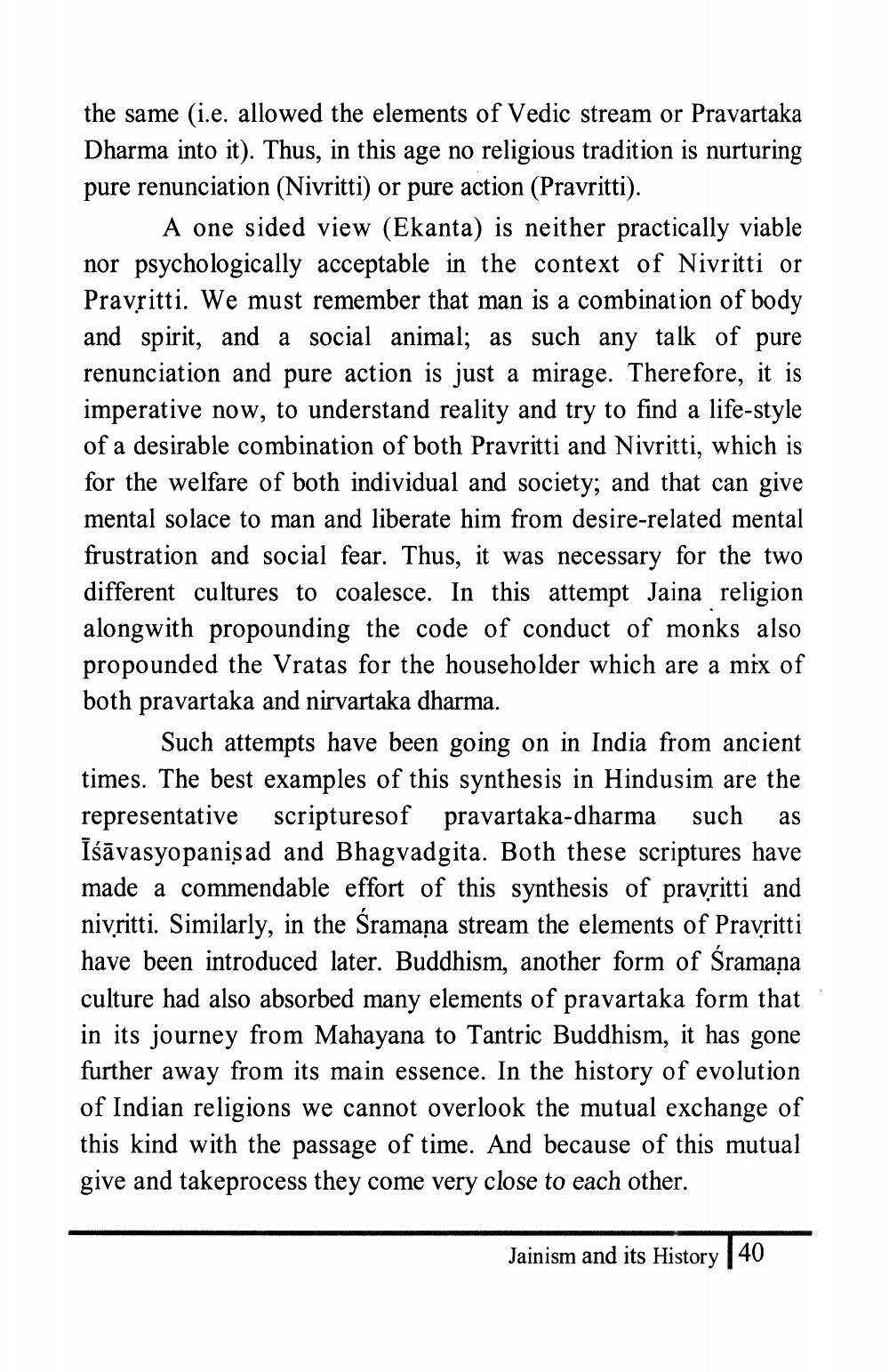________________
the same (i.e. allowed the elements of Vedic stream or Pravartaka Dharma into it). Thus, in this age no religious tradition is nurturing pure renunciation (Nivritti) or pure action (Pravritti).
A one sided view (Ekanta) is neither practically viable nor psychologically acceptable in the context of Nivritti or Pravritti. We must remember that man is a combination of body and spirit, and a social animal; as such any talk of pure renunciation and pure action is just a mirage. Therefore, it is imperative now, to understand reality and try to find a life-style of a desirable combination of both Pravritti and Nivritti, which is for the welfare of both individual and society; and that can give mental solace to man and liberate him from desire-related mental frustration and social fear. Thus, it was necessary for the two different cultures to coalesce. In this attempt Jaina religion alongwith propounding the code of conduct of monks also propounded the Vratas for the householder which are a mix of both pravartaka and nirvartaka dharma.
Such attempts have been going on in India from ancient times. The best examples of this synthesis in Hindusim are the representative scripturesof pravartaka-dharma such as Iśāvasyopanisad and Bhagvadgita. Both these scriptures have made a commendable effort of this synthesis of pravritti and nivritti. Similarly, in the Śramana stream the elements of Pravritti have been introduced later. Buddhism, another form of Śramana culture had also absorbed many elements of pravartaka form that in its journey from Mahayana to Tantric Buddhism, it has gone further away from its main essence. In the history of evolution of Indian religions we cannot overlook the mutual exchange of this kind with the passage of time. And because of this mutual give and takeprocess they come very close to each other.
Jainism and its History | 40




